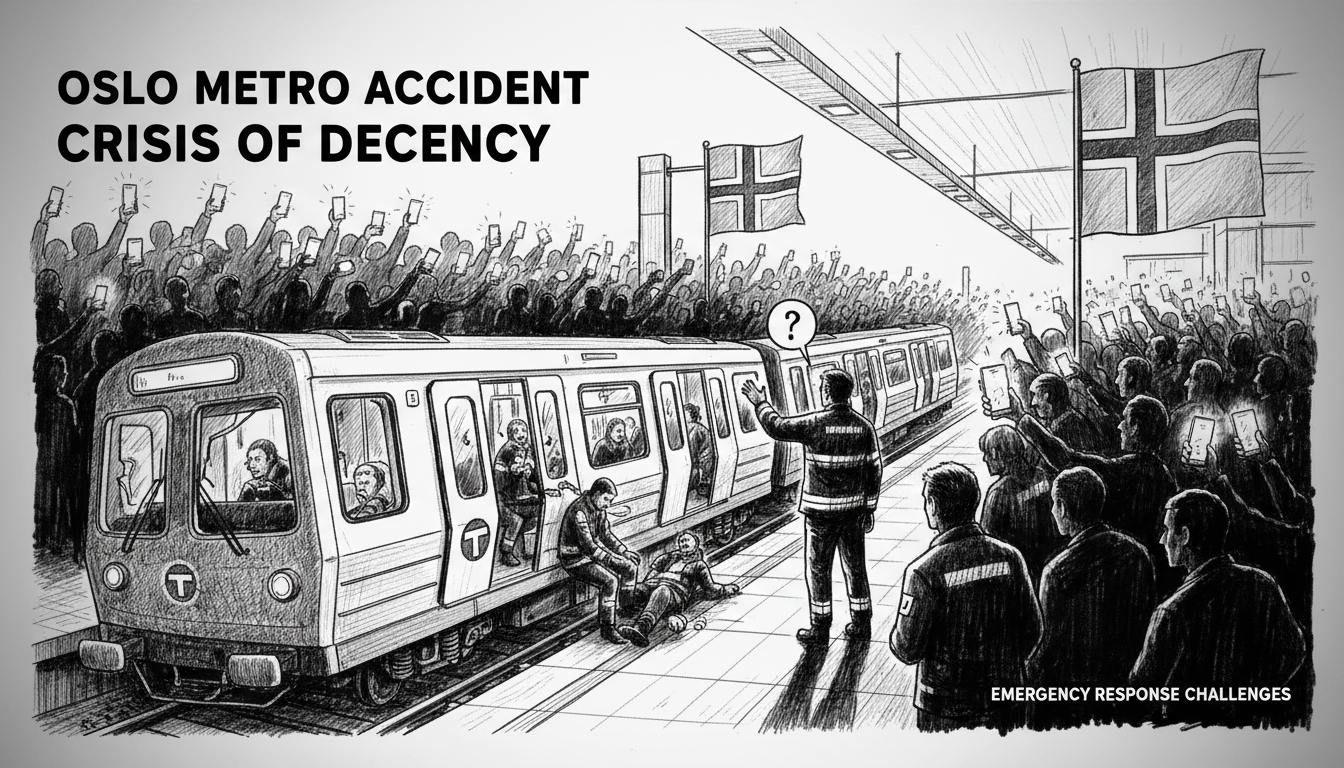Emergency crews faced unprecedented challenges during a serious metro incident at Oslo's main transport hub. A person was struck by a train at Jernbanetorget station during Monday's afternoon rush hour. The collision triggered massive disruptions across Oslo's public transport network.
Rescue commander Knut Halvorsen expressed shock at public behavior during the emergency operation. He described encountering crowds filming the injured victim with mobile phones. Some spectators laughed and made jokes during the rescue effort. Halvorsen shouted at the crowd to show respect and stop recording.
Oslo police operations leader Rune Hekkelstrand acknowledged the filming phenomenon has become common. He noted society's development toward constant documentation creates ethical dilemmas. The police repeatedly asked crowds to move back from the accident scene. Their requests produced limited results according to witnesses.
Firefighters struggled to control the situation as a fire truck needed to reverse near the station entrance. Many spectators ignored emergency workers' instructions. They continued moving toward the station building despite safety concerns.
This incident highlights growing tensions between public curiosity and emergency response effectiveness. Norwegian emergency protocols face new challenges in the smartphone era. The behavior raises questions about public decency during crisis situations.
Oslo's emergency services maintain strong response capabilities despite these social challenges. The city's integrated rescue system coordinates police, fire, and medical teams effectively. Such coordination becomes crucial during incidents at major transport hubs like Jernbanetorget.
Norwegian society generally respects emergency workers and follows instructions. This case represents an exception rather than the norm. The country's strong social contract typically ensures public cooperation during emergencies.
The incident's location at Oslo's central transport node amplified its impact. Jernbanetorget serves as a critical connection point for trains, buses, and metro services. Any disruption there creates widespread transportation consequences across the capital region.
Emergency leaders worry about social media implications from such filming. They fear injured persons' relatives might encounter distressing footage online. The situation creates additional psychological stress for both victims and responders.
Norwegian authorities continue developing protocols for managing crowds during emergencies. They balance public safety with operational effectiveness. This incident will likely inform future training and public awareness campaigns.

